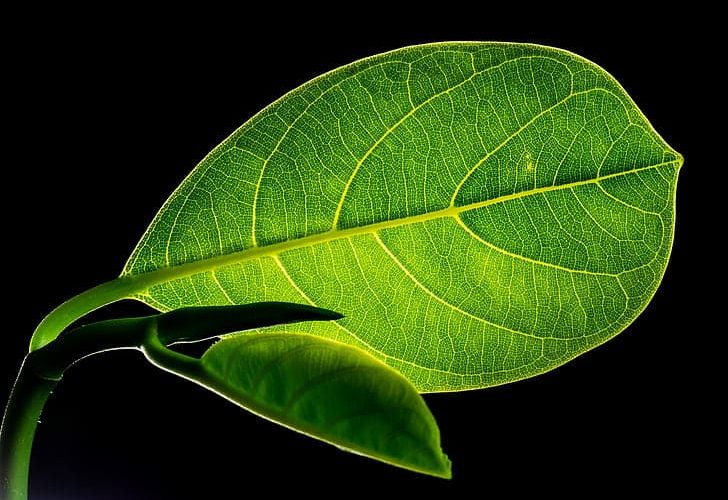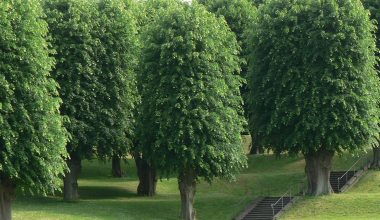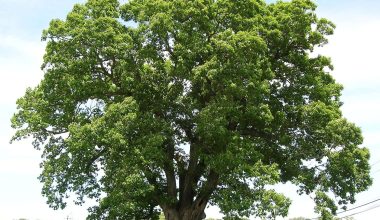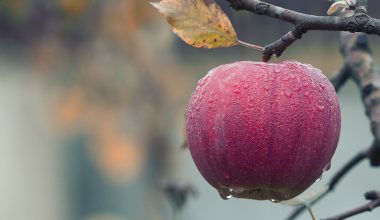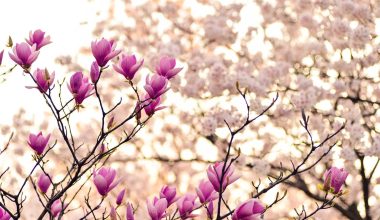Leaves are an essential component of all tree species. They help the tree survive by playing an important role in photosynthesis. Not only are leaves functional, but they also contribute to the aesthetics of a tree. A tree’s leaf contributes significantly to its shape and texture. You can often identify the genus and even the tree species from the leaves. Because leaves are only a part of specific species, they do not have scientific classifications. There are, however, categories and methods for identifying different types of leaves. This article will go over the various types of leaves based on their shape, their classifications, and the typical tree groups they represent. Here is a list of different types of leaves.
There are only two broad categories of leaves names Simple leaves and compound leaves, Now these leaves can be divided into different groups based on thier shape, size, their arrangements on the stem, flowering plant leaves or nonflowering plant leaves, Here is the list of 16 types of leaves based on their shape,
Simple Leaves
A simple leaf is one with a single-leaf blade. The leaf’s margins may be toothed. They can also have more than one lobe. A simple leaf, on the other hand, must have a single prominent vein or midrib running up the leaf. Oak, mango, cherry, rose, and maple is a few well-known species with simple leaves. The leaves on each of these are noticeably different, but they all fall into the category of a simple leaf.
Compound Leaves
Compound leaves are the polar opposite of simple leaves and include the remainder of the deciduous leaf types. A compound leaf is distinguished from the midrib by distinct parts. They are all connected by a single stem, but they are all separate. Compound leaves are divided into two subcategories. Because there are so many of these leaves, this makes species identification easier.
Types of Leaves Based on their Shape
1. Needle-Like Leaves
The needle-like leaves of coniferous trees. These are quite self-explanatory. They are slightly pointed or scaled leaves. They have a waxy layer on top that helps them stay attached to the tree and insulate it during the winter. The size of needles on trees can vary greatly. The needles of some trees, such as the ponderosa pine, can grow to be up to 10 inches (25.4 cm) long. The foxtail pine, on the other hand, has the shortest needles on average. Their needles are approximately 1 inch (2.5 cm) long. Cedars, larch, spruces, and pine are some other trees with needle-like leaves.
Also Read: 12 Spectacular Underwater Plants and Sea Creatures
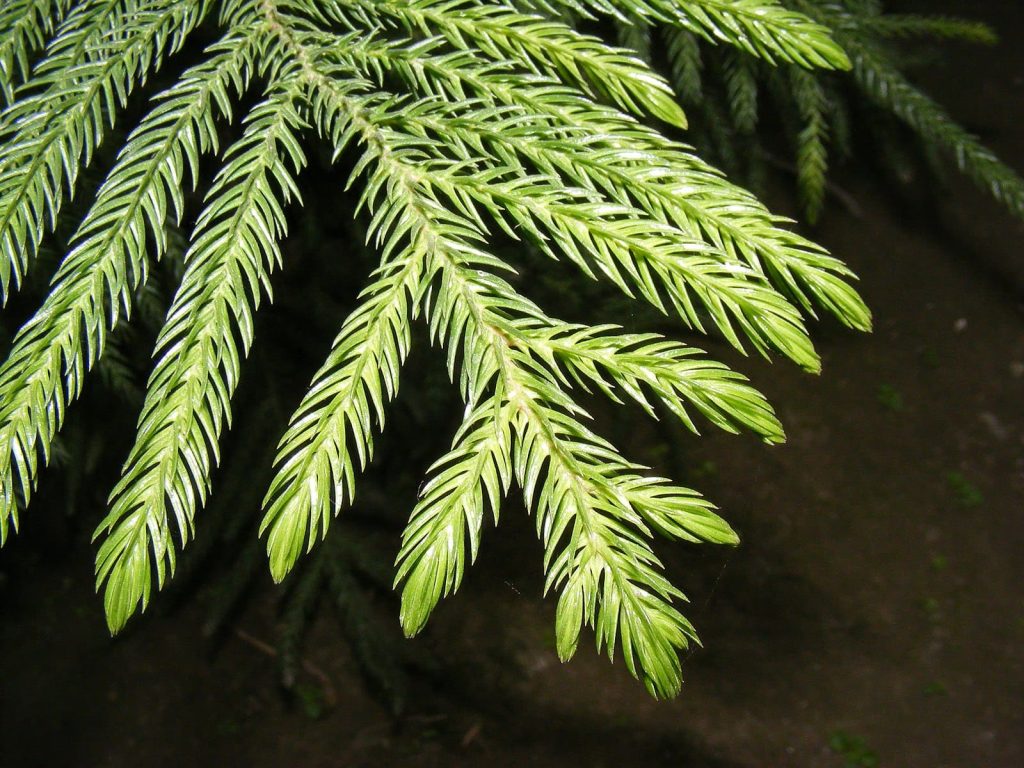
Image Source: Wikimedia
2. Orbicular Leaves
The name ORB-icular gives away the general shape of this leaf. These leaves are circular or nearly circular, with no divisions. These leaves should be rounded in shape, just like an orb. Orbicular leaves distinguish their plants because they are not a traditional leaf shape. Cranberry Cotoneaster, Quaking Aspen, and Purple Common Tree are examples of plants with orbicular leaf shapes. Furthermore, certain lilac species have orbicular leaf shapes.
Also Read: 10 Different Types of Corals In The World
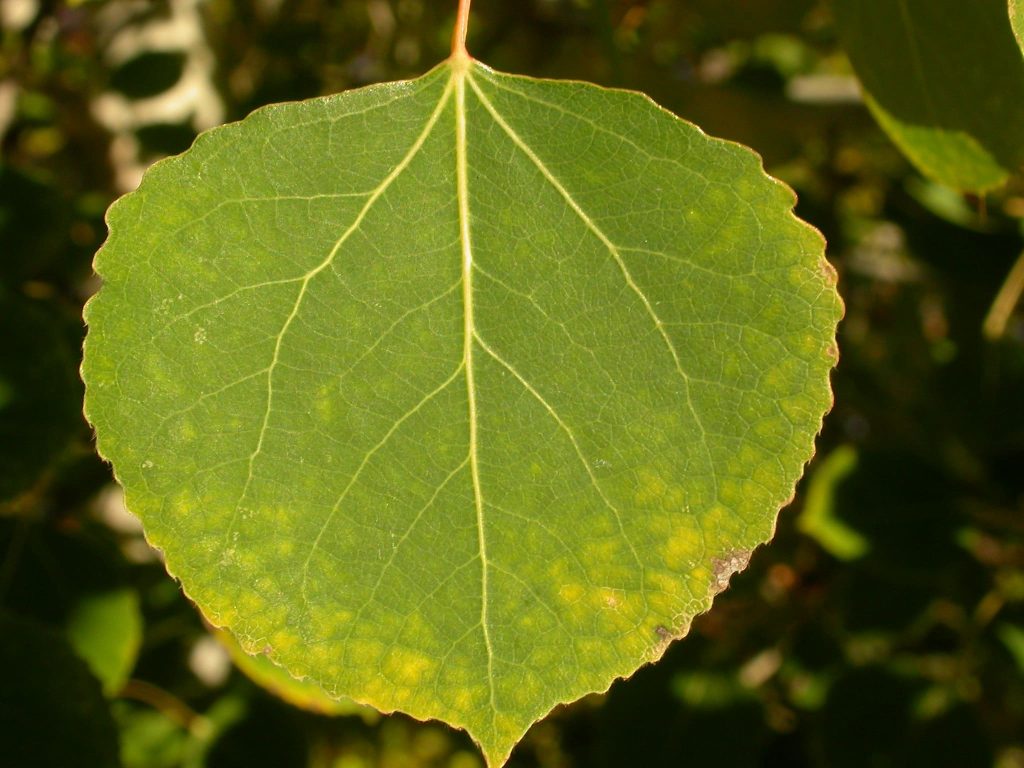
Image Source: Matt lavin
3. Oblique Leaves
An obliquely shaped leaf can also be combined with other leaf types. The term “oblique” refers to the leaf’s base rather than its overall shape. In geometry, the term ‘oblique’ is most commonly associated with a triangle with no equal sides. Oblique in a leaf means that the base of the leaf is unequal. One side of the base will be larger, wider, or rounder than the other. Although it is rare to find a leaf with perfectly matching basal sides, oblique leaves are those that are consistently mismatched on a plant.
Also Read: 10 Most Popular Trees of Arkansas
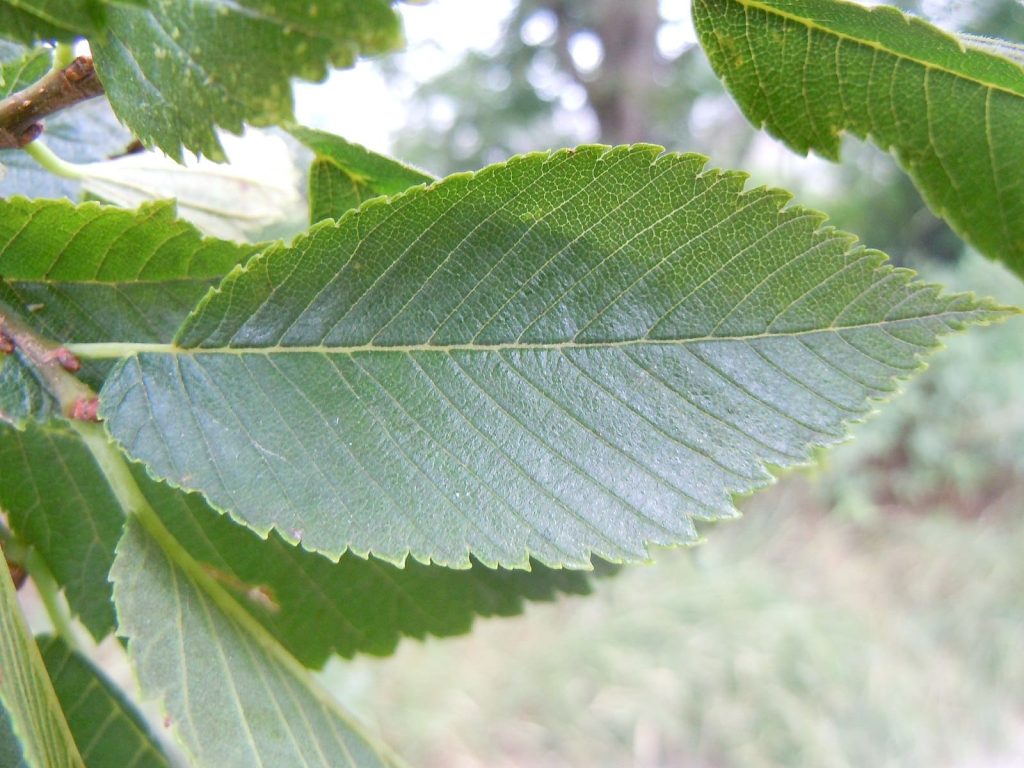
Image Source: Wikimedia
4. Linear Leaves
A linear leaf is the simplest form of a simple leaf. There are no divisions in it. It is instead long and slender. Typically, both sides of the leaf remain close to the midrib and terminate at a point. Grass is the most common example of a plant with linear leaves. However, if you’re looking for a flowering example, cornflowers frequently have linear upper leaves.
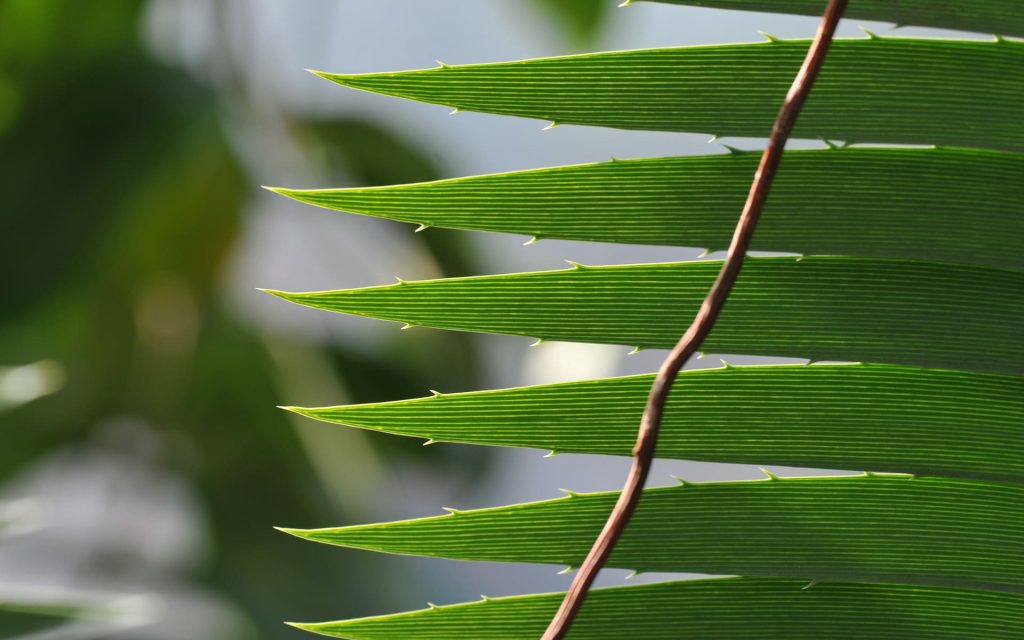
Image Source: Steven Severinghaus
5. Cordate Leaves
A cordate leaf transforms into a heart shape. The name of this type of leaf describes its basal shape rather than its overall shape. A cordate leaf has deep indents where the leaf meets the midrib, giving it the appearance of the top of a heart. The Eastern Redbud, a classic example of a cordate leaf, is one of the species with cordate leaves. Cordate leaves are also found on the Littleleaf Linden and the Katsura tree.
Also Read: Top 10 Natural Wonders Of The World
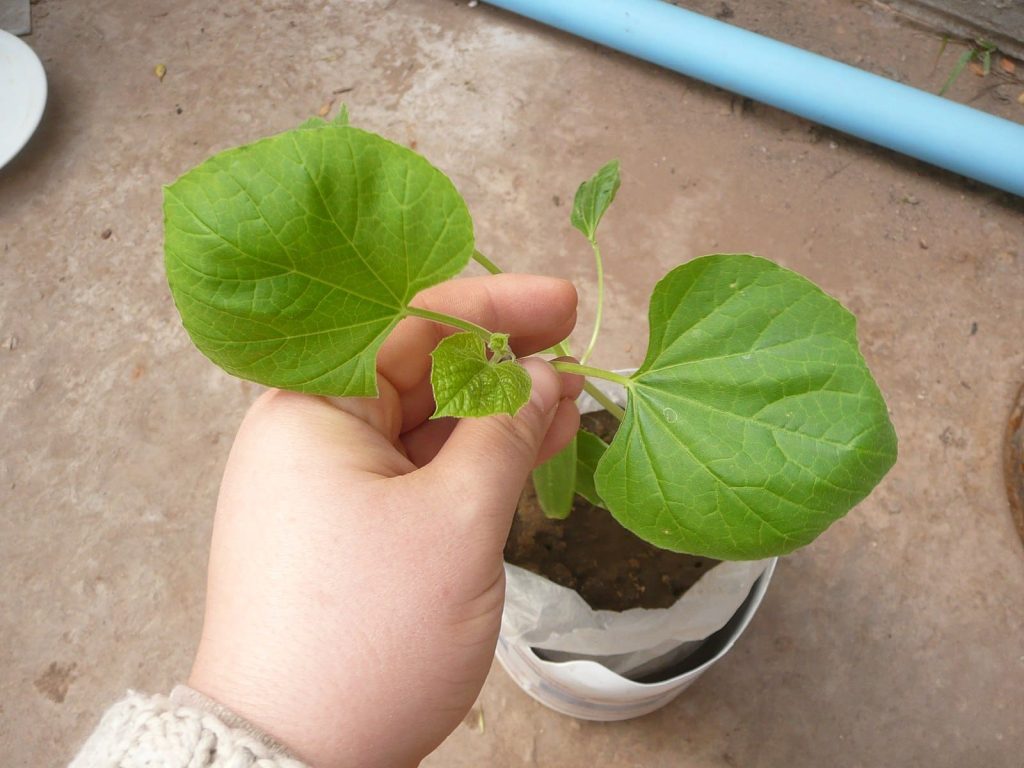
Image Source: Wikimedia
6. Oblong Leaves
An oblong leaf has two rounded ends and parallel sides. Some people refer to this as ‘oval.’ Others consider the shape to be almost too rectangular to be an oval. Another distinguishing feature is that the sides are significantly longer than the ends. There are numerous trees with oval or oblong leaves. Some of these are debatable but keep in mind that using one leaf as an example isn’t enough to base their categorical shape on. Boxwood, citrus trees, and some apple varieties are among these trees.
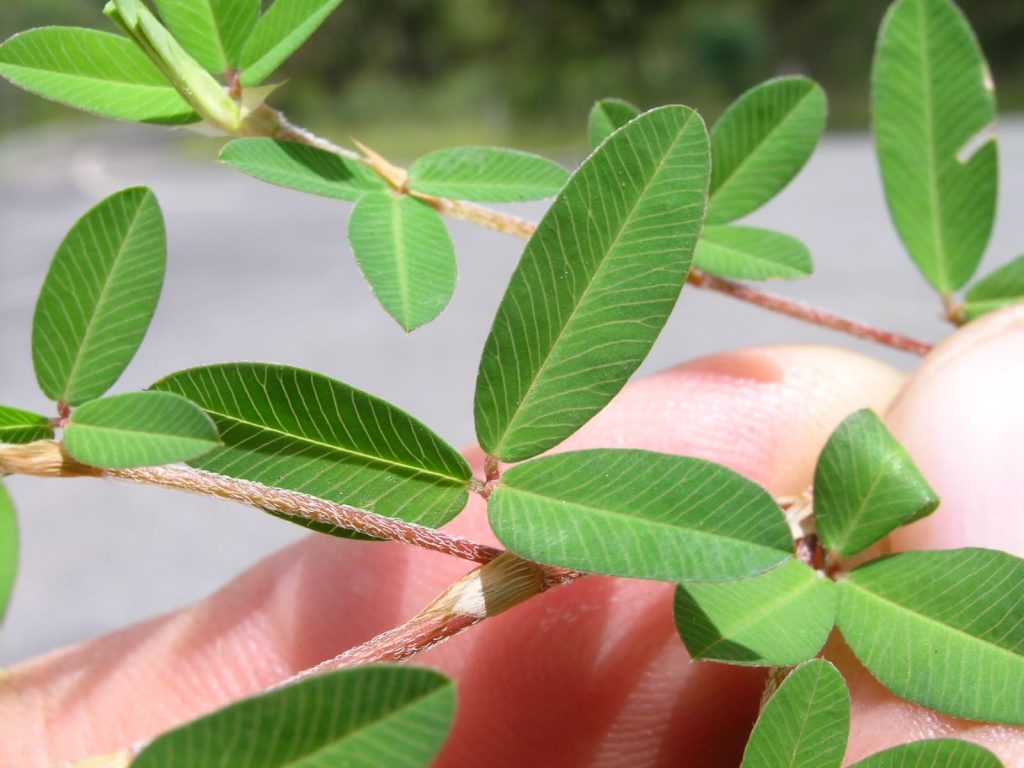
Image Source: Harry Rose
7. Lanceolate Leaves
Lanceolate leaves are usually quite long. Their most distinguishing feature is a lance-like head. The leaf is very thin at the pedicel and gradually widens until it tapers to a point at the top. For the most part, these leaves are classified as simple leaves. Willows are most commonly associated with lanceolate leaves. Most willow species have long, thin leaves that end in a lanced point.
Also Read: 10 Amazing Types of fruits In The World
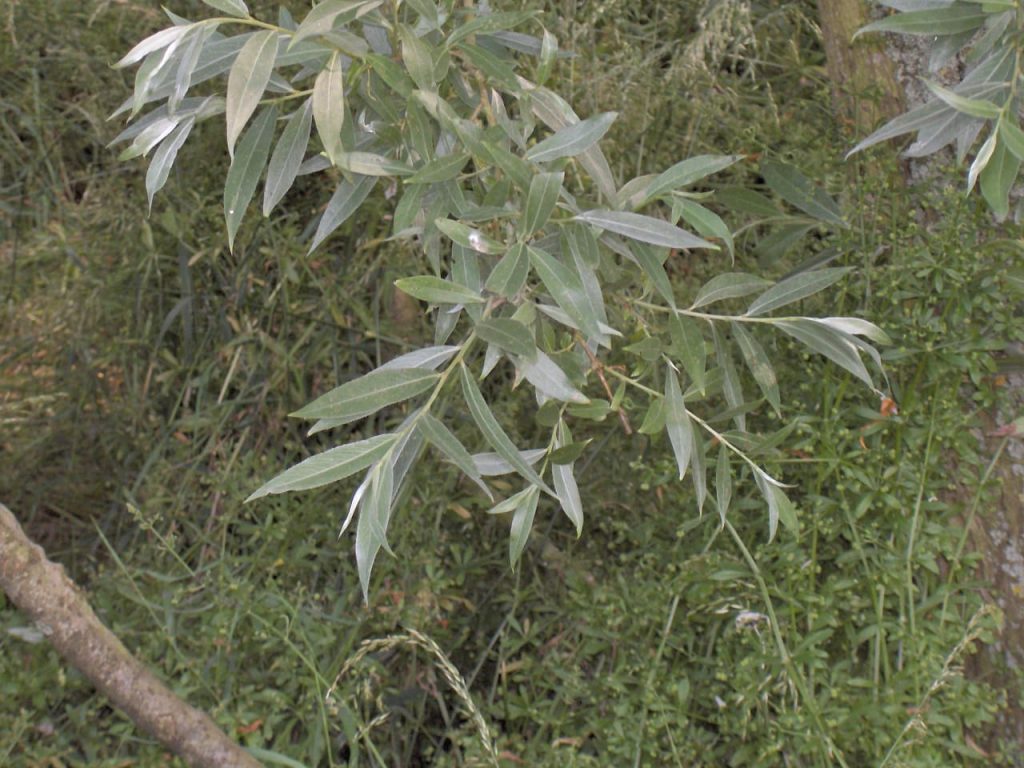
Image Source: Wikimedia
8. Reniform Leaves
Reniform leaves are uncommon in mature tree species. The shape of these leaves is similar to that of cordate leaves. Reniform leaves, on the other hand, are deeper in overall shape than cordate leaves. They have a kidney shape rather than a heart shape, with a more rounded edge. The Carolina Basswood has reniform leaves, while the Eastern Redbud can have reniform leaves instead of cordate leaves.
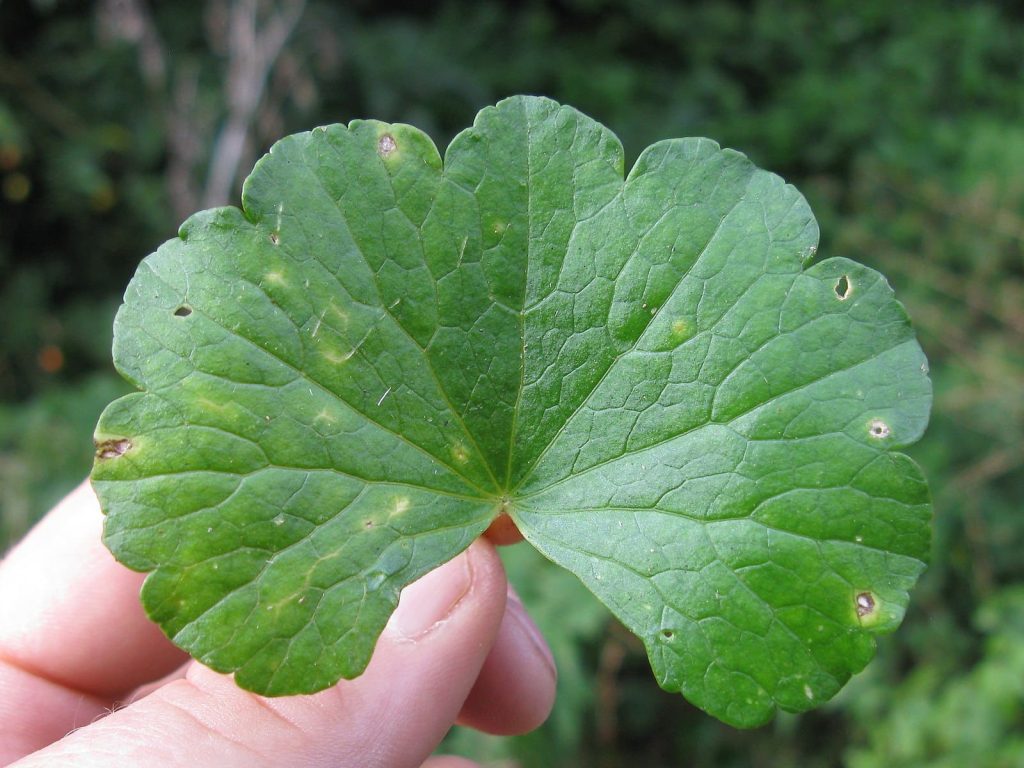
Image Source: Wikimedia
9. Sagittate Leaves
Another unusual leaf shape is the sagittate leaf. Sagittate leaves are those that resemble arrowheads. They have a distinct triangular pattern centered on their pedicel. With the possible exception of some exotic species, these are not tree leaves. Instead, only certain vining and aquatic plants have genuinely sagittate leaves. Sagittaria longiloba is an example of a plant with this type of leaf. This aquatic plant has arrowhead-shaped leaves, as its Latin name suggests.
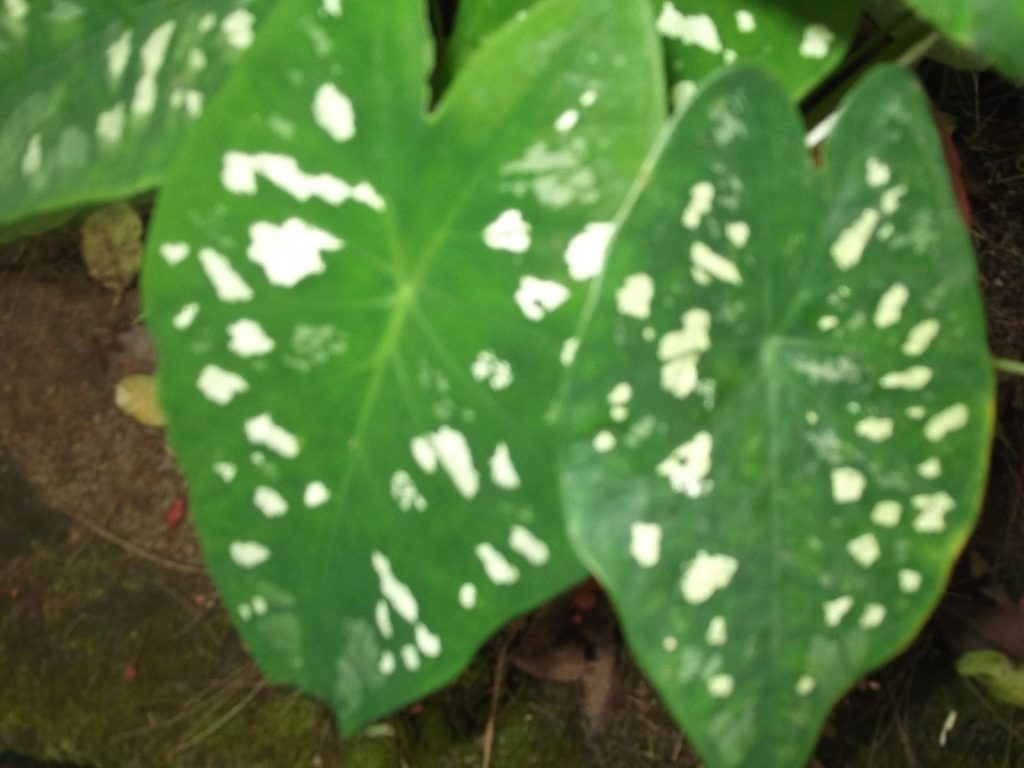
Image Source: Wikimedia
10. Spatulate Leaves
Spatulate leaves look like lanceolate leaves. They are frequently quite long, thin at the end that attaches to the branch, and widen until the leaf tip. The difference is that instead of a lance-like end, these have a broader spatula-like shape. They are easily confused because it all depends on how broad the top is in comparison to the length of the leaf at the bottom. Water oak is a tree with spatulate leaves.
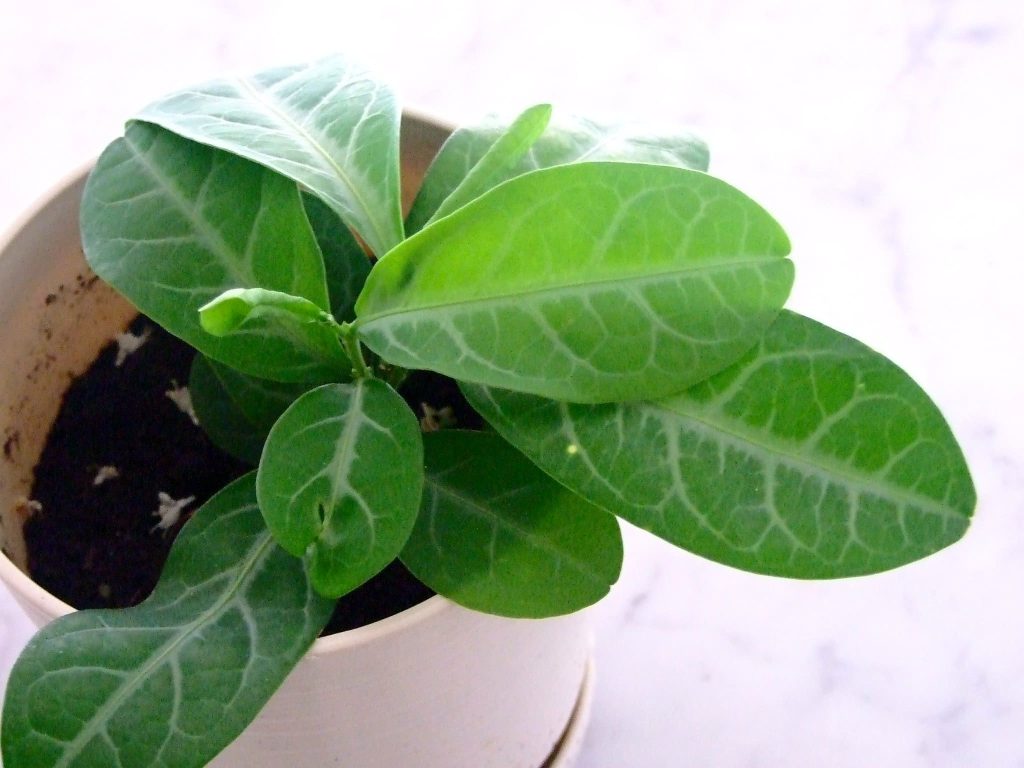
Image Source: Kai Yan
11. Ovate leaves
Ovate leaves refer to the leaf that is wider at the base than the midpoint and apers toward the apex, The length and width of ovate leaves are a length and width ration of 1.5:1 to less than 2:1. There are different kinds of ovate leaves such as that is determined by the length-to-wide ratio such as lanceolate, narrowly ovate, widely ovate and very widely ovate. Many trees have ovate leaves such as African cordia, apricot, Ashok, beach cordia, and many more.

12. Elliptical (Ellipse-shaped)
The elliptical leaves have a shape like an eclipse and are oval-shaped with a very small or no point at the tip. There are many trees with elliptical-shaped leaves such as African teak, Almond, Alpine cheese tree, Anacua, Ant tree, Apple mangrove, Asiatic mangrove, Assam boxwood, and many more. These leaves are more or less in oval though tending to a point at each end. This is one of the most common leaf shapes and has a specific meaning in botany than its strict geometrical meaning.
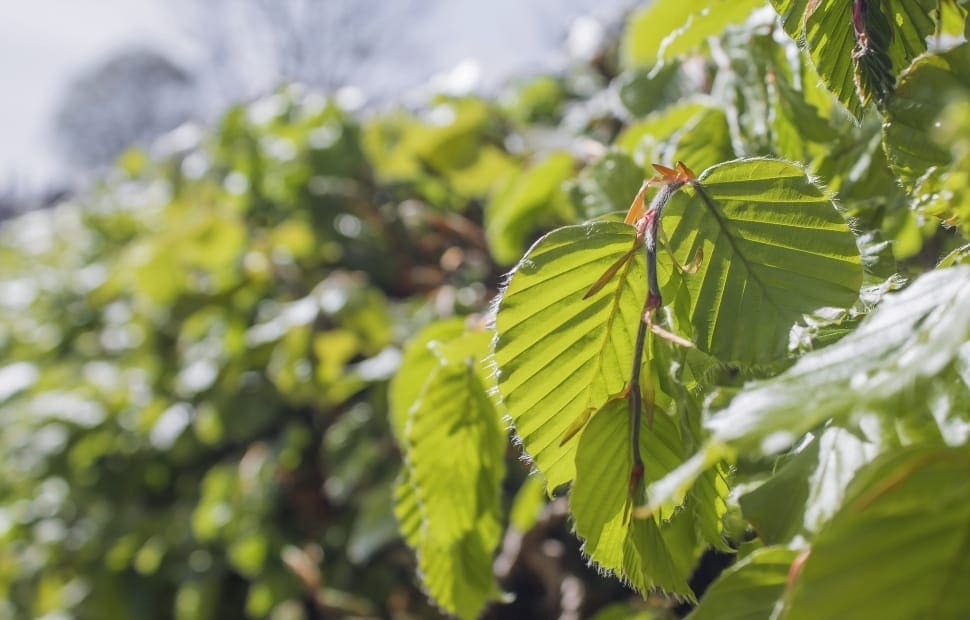
13. Hastate (Two-lobbed Sagittate)
A hastate leaf is triangular with basal lobes. The form is agitated with two basal lobes that are outward-facing. This is also shaped like an arrowhead, but the basal lobes diverge or extend away from the midrib, giving an outline that resembles a halberd. The term “hastate” comes from the Latin word “hasta”, which means spear. These leaves have three points, with one at the tip and two that stick out sideways in a manner that resembles a spear. It is one of the common types of leaves based on their shape in the world.
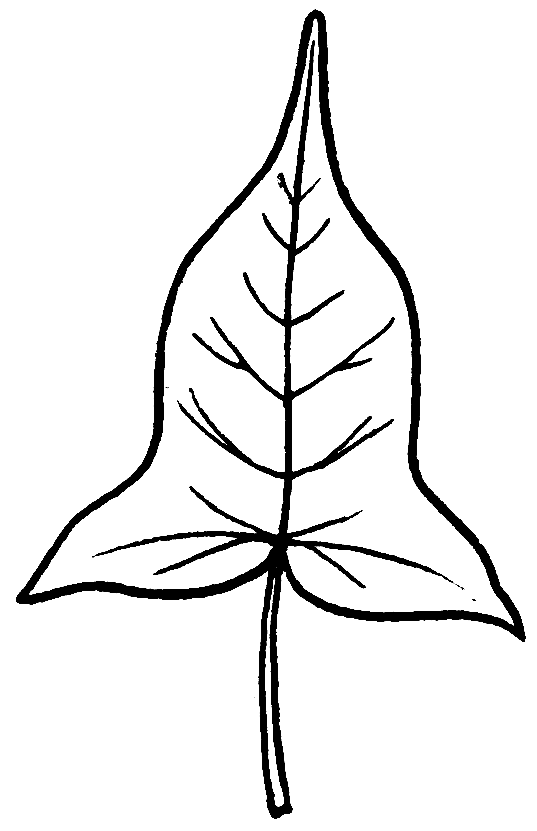
Images Source: Wikimedia
14. Lyrate (Lyre Shaped)
Lyrate is one of the types of leaves based on their shape which is in the shape of a lyre plants that have lyrate leaves are Arabidopsis lyrata, Berlandiera lyrata, Ficus lyrata, Leibnitzia lyrata, Paysonia lyrata, Quercus lyrata, Salvia lyrata, and Saussurea costus. These leaves are with the terminal lobe rounded and much larger than the subtending lobes. There are many plants from the brassica family, such as radish, kale, and turnip have lyrate leaves. It is a type of compound leaf where the leaflets gradually increase in size towards the end of the leaf giving it a shape of a lyre that resembles an ancient stringed musical instrument.
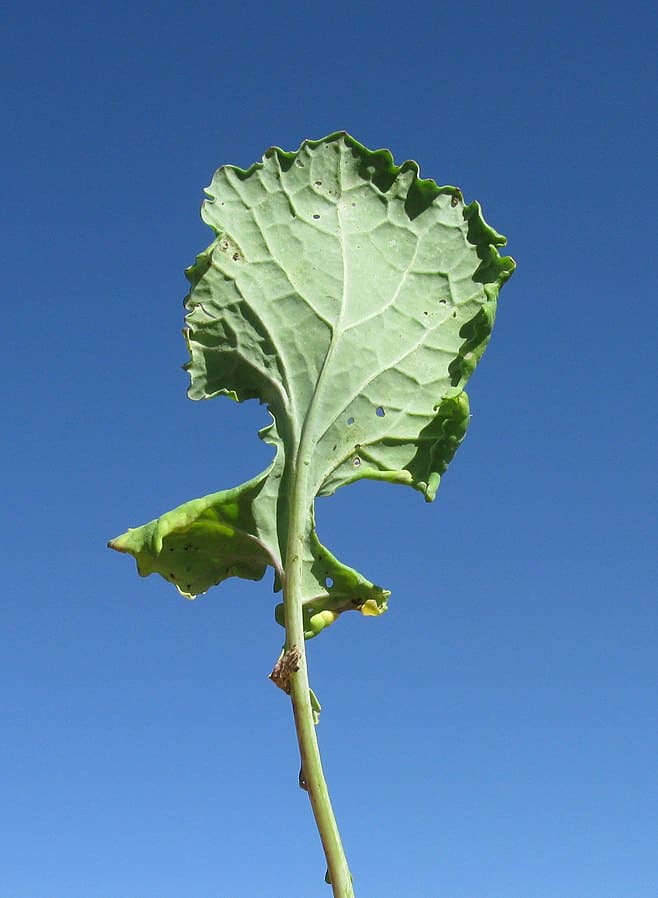
Image Source: Wikimedia
15. Rhomboid (Diamond Shaped)
The best example of Rhomboid leaves is the Black Poplar tree which has simple leaves that can grow upto 5 to cm in length and are dark green above and light green below. There are various ways to identify Rhomboid-shaped leaves based on venation pattern, leaf arrangement, and whether it has a woody stem or is herbaceous. It also depends on leaf texture, leaf color, and any scents coming from the plant. It is also known as a diamond-shaped leaf.
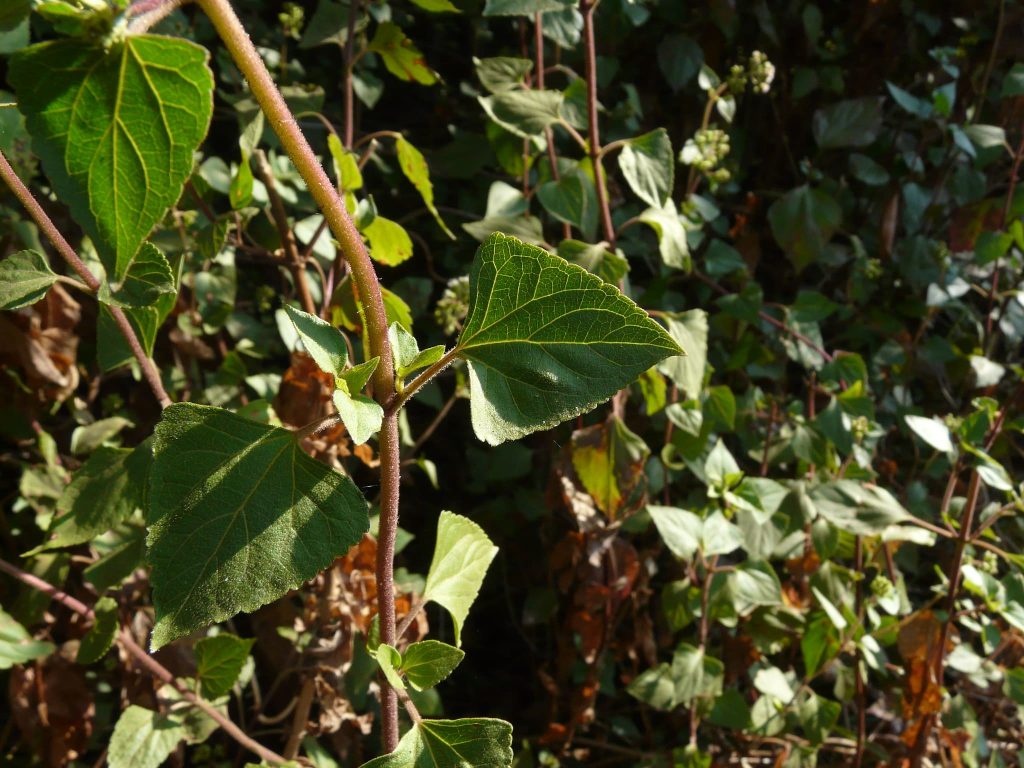
Image Source: Danish Valke
16. Cuneate (Wedge-Shaped)
The cuneate leaf is one of the types of leaves which is triangular at the base and tapering to a point. This looks like a wedge shape that has truncated at one end and tapered to a point at another. The Cuneate leaf base is used to define a type of leaf base where the leaf base is inversely triangular” in shape. The plants having cuneate leaves are Star Magnolia, White Oak, Gray Dogwood, and many more. The term “cuneate” is derived from the Latin word “cuneus”, which means “wedge”.
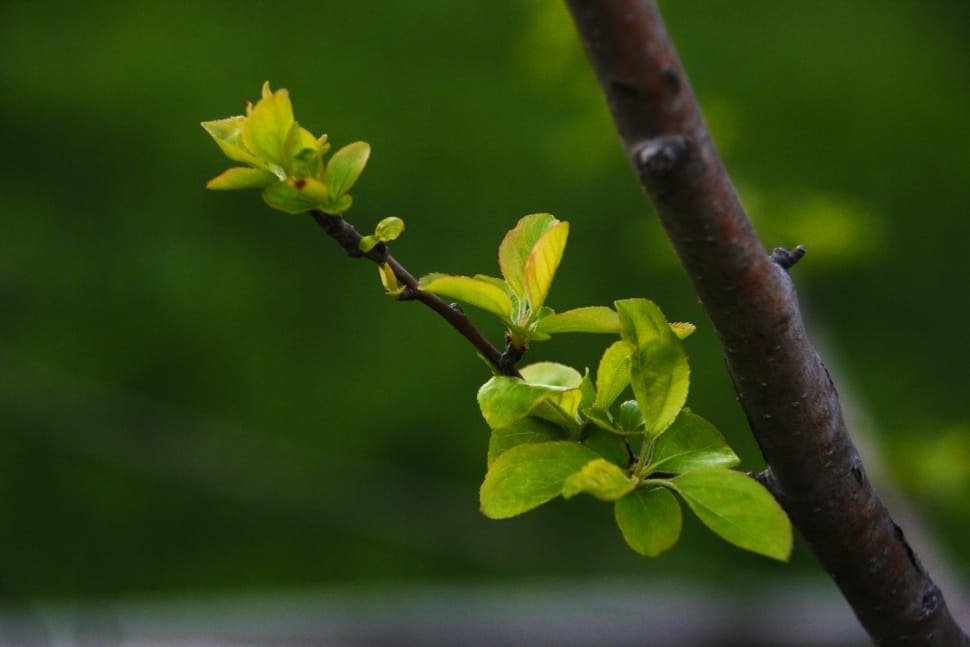
This is the list of types of leaves based on their shape in the world. Kindly share and post your comments.
